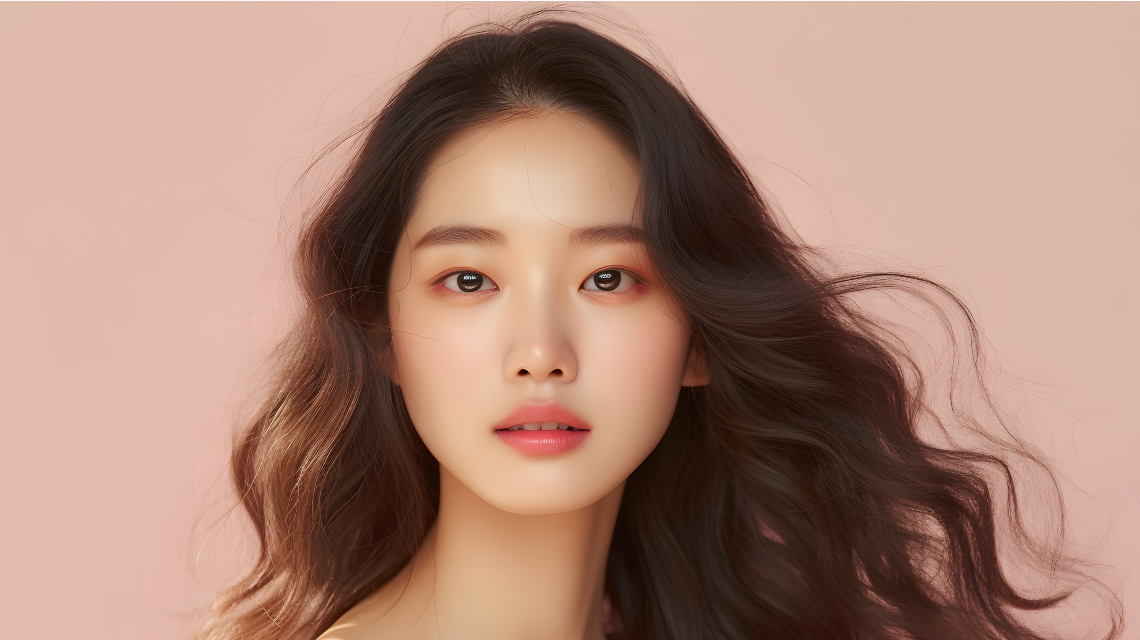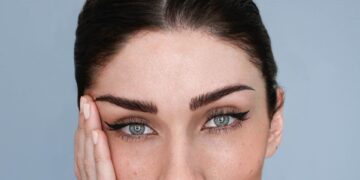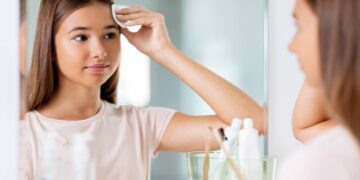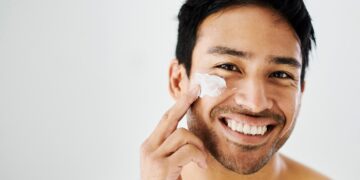Decoding the K-Beauty Craze: From Rituals to Realities
The allure of K-beauty, with its promise of radiant, healthy skin, has captivated audiences worldwide. But what exactly fuels this global phenomenon, and how is it being adapted across different cultures and skincare philosophies?
The Rise of Korean Beauty and its Core Principles
K-beauty’s surge in popularity is a multifaceted phenomenon, driven by effective products, innovative marketing, and the significant cultural influence of Korean entertainment. The emphasis on achieving a luminous, healthy complexion through hydration and specialized ingredients has resonated deeply with consumers globally.
At the heart of K-beauty lies a philosophy of prevention rather than just correction. Unlike some Western approaches that prioritize makeup for coverage, K-beauty emphasizes long-term skin health. This involves layering hydrating products with potent ingredients like snail mucin, ginseng, and heartleaf, all working synergistically to nourish and protect the skin. This approach appeals to a broad audience, from younger demographics seeking to maintain a youthful glow to older consumers looking for effective anti-aging solutions.
Specific elements of K-beauty, such as sheet masks, have successfully transitioned into mainstream markets. Their convenience, affordability, and visible results have made them a staple in many skincare routines worldwide. The sustained global interest in Korean cosmetics is evident in the numbers, with a reported 54% increase in imports to a major Western market during 2024, demonstrating its enduring appeal despite various external factors.
The focus on gentle yet effective formulations is a key differentiator. K-beauty products often prioritize natural ingredients and avoid harsh chemicals, making them suitable for sensitive skin. This emphasis on skin-friendly formulations aligns with the growing consumer demand for clean beauty and sustainable practices.
The Science Behind the Glow: Ingredients and Innovations
K-Beauty’s global success is not just a trend; it’s a testament to innovative ingredients and cutting-edge formulations. While snail mucin initially captured attention, a diverse range of components is now redefining skincare.
The pursuit of “glass skin”—a dewy, almost translucent complexion—has fueled interest in ingredients beyond the initial spotlight on snail mucin. Centella asiatica extract, rice filtrate, and heartleaf are gaining prominence for their calming and hydrating properties. These ingredients align perfectly with the K-Beauty focus on gentle yet effective skincare.
Sheet masks, another cornerstone of K-Beauty, exemplify this innovative approach. Crafted from materials like cotton or bamboo, these masks are saturated with potent serums containing beneficial ingredients such as niacinamide, vitamin C, collagen, retinol, and peptides. Some even feature innovative components like salmon DNA (PDRN), designed to deliver active ingredients efficiently into the skin.
The appeal of sheet masks lies in their affordability, convenience, and rapid visible effects. Users often experience a brighter skin tone, improved elasticity, and intense hydration after just one use. Advancements in skincare technology have led to the development of hydrogel masks, which enhance ingredient delivery by slightly melting upon contact with body heat, allowing for better absorption.
These masks embody the K-beauty philosophy of prevention by providing intense hydration and nourishment, helping to maintain skin health and prevent future issues. Their ability to deliver quick, visible results contributes to their enduring popularity as a global symbol of self-care.
The North American market is experiencing significant growth in K-Beauty, driven by consumer demand for innovative skincare rooted in natural ingredients. Social media influencers and celebrity endorsements play a crucial role in driving awareness and generating interest in new products and ingredients. This digital influence highlights the power of online platforms in shaping beauty trends and consumer preferences.
There’s a growing demand for hydrating toners and gentle formulations, especially for sensitive skin. Consumers are seeking mild yet effective solutions that deliver visible results, reflecting a preference for skincare that prioritizes both efficacy and gentleness.
J-Beauty and K-Beauty: A Convergence of Skincare Philosophies
The skincare landscape is constantly evolving, with trends emerging and blending in fascinating ways. While K-Beauty continues its global ascent, particularly within the Asia-Pacific region, J-Beauty is experiencing renewed attention for its premium positioning and focus on quality.
K-Beauty’s success is driven by its innovation, affordability, and effective products that resonate with a broad consumer base. The influence of K-pop and South Korean pop culture further fuels its trendsetting status and accessibility. J-Beauty, on the other hand, is gaining recognition for its emphasis on simplicity, high-quality ingredients, and meticulous formulations.
Japanese imports of Korean beauty products have seen a significant increase, even surpassing established brands in certain markets. This convergence reflects a growing cultural exchange where the strengths of both J-Beauty and K-Beauty are appreciated and sought after.
The emphasis on simplicity and quality in J-Beauty complements the technological innovations and rapid product cycles of K-Beauty. As consumers seek personalized routines, the line between J-Beauty and K-Beauty will likely continue to blur. Brands are leveraging social media, natural ingredients, and ethical practices to meet evolving consumer demands.
This cultural exchange is not limited to product imports. Skincare philosophies are also converging, with consumers adopting elements from both J-Beauty and K-Beauty to create customized routines that address their specific needs. The focus on hydration, gentle exfoliation, and sun protection remains central to both approaches.
American Adaptations: K-Beauty’s Influence on the U.S. Market
The fusion of beauty trends continues as K-Beauty makes its mark on the American skincare landscape. With innovative products and routines capturing attention, the U.S. is embracing these K-Beauty secrets while adapting them to suit local preferences.
The American market is experiencing a surge in K-Beauty adoption, with “glass skin” ideals and multi-step routines becoming increasingly popular. This trend is driven by social media, wider retail availability, and a growing consumer interest in efficacy and ingredient transparency.
American consumers spend a significant amount on beauty products annually, averaging $3,756. They are drawn to the novelty and effectiveness of K-Beauty brands. This adaptation involves localizing products to suit different skin types and climates, along with utilizing digital marketing for education and engagement.
Supermarkets and hypermarkets account for a substantial 45% of the global K-beauty market share. The increasing role of e-commerce channels further fuels accessibility and growth. These channels provide platforms for brands to connect directly with consumers and showcase the nuances of K-Beauty routines.
The global K-Beauty market reached USD 14.61 billion in 2024, and projections estimate an annual growth rate exceeding 11%. Women are central to this trend, accounting for 67% of K-beauty product revenue. This growth is significantly shaped by North Asia, which drives over a third of global beauty trends.
Q&A
Question 1: What are the key factors contributing to the global popularity of K-Beauty?
Answer: K-Beauty’s rise is fueled by a combination of factors: effective products focusing on hydration and prevention, innovative marketing strategies leveraging Korean entertainment’s cultural influence, and the appeal of “glass skin”—a dewy, hydrated complexion. The emphasis on gentle yet effective skincare, using ingredients like snail mucin and centella asiatica, also resonates with a broad audience.
Question 2: How does the K-Beauty approach differ from some Western skincare philosophies?
Answer: Unlike some Western approaches that prioritize makeup for coverage, K-Beauty emphasizes prevention through layering hydrating products. It focuses on long-term skin health rather than temporary fixes, prioritizing ingredients that promote hydration and skin health over immediate cosmetic results.
Question 3: What role do sheet masks play in the K-Beauty phenomenon and its global adoption?
Answer: Sheet masks are a significant element of K-Beauty’s mainstream success. Their convenience, affordability, and the immediate visible results (brighter skin tone, improved elasticity) have made them incredibly popular globally. Technological advancements, such as hydrogel masks improving ingredient absorption, further enhance their appeal.
Question 4: How is the North American market contributing to the growth of the K-Beauty industry?
Answer: The North American market shows significant growth in K-Beauty, driven by consumer demand for innovative skincare using natural ingredients. The “glass skin” ideal and multi-step routines are gaining traction, boosted by social media and wider retail availability. This demonstrates the successful adaptation and integration of K-Beauty into a major Western market.
Question 5: What are some of the emerging trends in the intersection of J-Beauty and K-Beauty?
Answer: While K-Beauty leads in innovation and product cycles, J-Beauty maintains a strong position with its premium image and emphasis on simplicity and quality. There’s a growing cultural exchange, with increased Japanese imports of Korean beauty products. The future likely involves a blurring of lines, with brands focusing on personalized routines, natural ingredients, and ethical practices to meet evolving consumer preferences.







